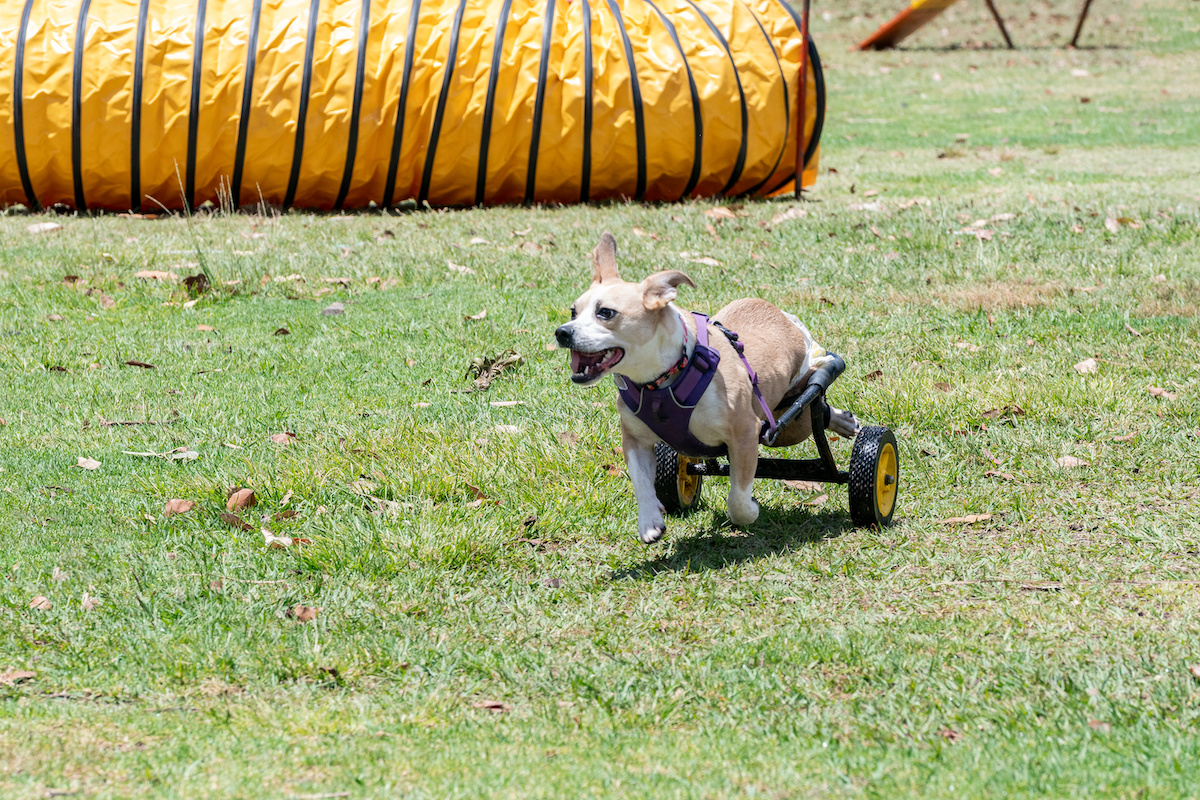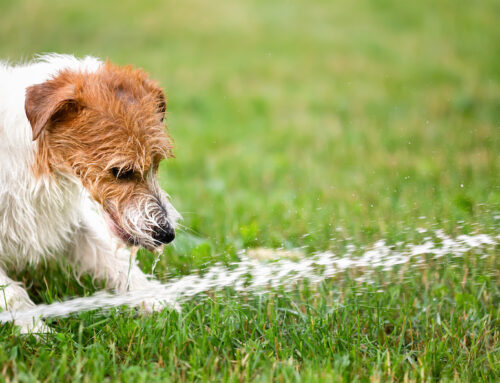Caring for a special needs pet can be both a rewarding and challenging experience. Whether your pet has physical disabilities, chronic illnesses, or age-related issues, the right care can make a significant difference in their quality of life.
Here are comprehensive tips on how to provide the best care for your special needs furry friend.
Understanding Special Needs Pets
Before diving into the care specifics, it’s crucial to understand what qualifies a pet as having special needs. These can range from blindness, deafness, and mobility issues to chronic conditions like diabetes or epilepsy.
Some pets may require special care due to:
- Trauma
- Past abuse
- Congenital disabilities
Recognizing the specific needs of your pet is the first step in creating a tailored care plan.

Creating a Safe Environment for Special Needs Pets
Creating a safe and supportive environment is essential for the health and well-being of special needs pets. Here are some detailed strategies to ensure your home accommodates their unique requirements effectively:
1. Enhanced Accessibility
For pets with mobility challenges, such as those with arthritis or paralysis, the layout of your home can significantly impact their ability to move around comfortably.
Consider installing ramps both inside and outside your home to provide easy access to different levels. If ramps aren’t feasible, portable steps or a supportive sling to assist them in getting onto furniture or into the car can also help.
2. Slip-Free Surfaces
Flooring is particularly important for pets with poor mobility. Slippery surfaces like tile or hardwood can pose a risk for falls or injuries. Placing non-slip rugs or mats in high-traffic areas can provide traction and stability for your pet as they move around.
In cases where changing the flooring is an option, opting for carpeting or textured flooring can make a substantial difference in their confidence and safety while navigating the home.
3. Secure and Comfortable Resting Areas
Create multiple resting areas throughout your home where your pet can lie down comfortably and safely. These areas should be equipped with orthopedic pet beds or thick, supportive mats that cushion their joints and make getting up and lying down easier. For pets with severe mobility issues, consider beds with raised sides that they can lean against for support.
4. Consistent Layout
Maintaining a consistent layout in your home is crucial for pets with vision impairment. Frequent changes can confuse and disorient them, leading to anxiety or injuries. Keep pathways clear of clutter, and avoid moving furniture or decorations that your pet has become accustomed to navigating around.
5. Controlled Temperature Zones
Pets that are sensitive to temperature changes due to thin coats, age, or illness need special attention to their living conditions. Installing pet-safe heating pads in their beds can provide warmth in colder months, while cooling mats and access to shaded or air-conditioned rooms can help them stay comfortable during hot weather. It’s important to closely monitor their environment to ensure it remains within a safe temperature range.
6. Safety Modifications in High-Risk Areas
Areas like stairs, pools, and balconies can pose significant risks to special needs pets. Installing baby gates or barriers to restrict access to these areas can prevent accidents. For homes with swimming pools, a pool cover or fence ensures that pets cannot accidentally fall in.
7. Lighting for Visibility
For aging pets or those with impaired vision, adequate lighting can help them navigate their environment more safely, especially during the night. Use night lights in hallways and next to beds to help guide your pet and prevent disorientation or fear during low-light conditions.
Dietary Considerations for Special Needs Pets
Special needs pets often require special diets. Work with your veterinarian to:
- Tailor Nutrition: Some conditions, such as kidney disease or diabetes, may require dietary adjustments to manage symptoms. High-quality, nutrient-dense food tailored to their specific health needs can make a big difference.
- Hydration: Ensure that your pet is adequately hydrated, particularly if they have kidney-related issues or are prone to urinary tract infections.
- Feeding Assistance: Pets with mobility issues might find it difficult to reach their food and water. Consider elevated bowls or automated feeders that allow easy access.
Regular Veterinary Care for Special Needs Pets
- Routine Check-Ups: Regular visits to the vet are crucial. These check-ups can help catch potential health issues before they become serious and ensure that your pet’s health management plan is effective.
- Vaccinations and Preventative Medications: Keep up with vaccinations and routine treatments for fleas, ticks, and worms. Discuss with your vet the best approach considering your pet’s special conditions.
- Emergency Preparedness: Have a plan in place for emergencies. Know the location of the nearest 24-hour veterinary clinic and keep an emergency kit handy.
Mobility Aids and Therapy
- Mobility Aids: Harnesses, wheelchairs, and support slings can help pets with disabilities enjoy mobility. Custom-fit these tools to ensure they meet the specific needs of your pet.
- Physical Therapy: Regular therapy can improve strength, flexibility, and overall well-being. Hydrotherapy, massage, and passive range-of-motion exercises can be particularly beneficial.

Mental Health and Enrichment for Special Needs Pets
Promoting mental health and providing enrichment for special needs pets are vital components of their overall care. These pets often face unique challenges that can affect their mental well-being, making it essential to engage their minds actively and creatively.
Here are some detailed strategies to ensure your special needs pet remains mentally stimulated and emotionally satisfied:
1. Adapted Playtime
Tailor play activities to match your pet’s physical capabilities. For example, pets with limited mobility might not chase a ball, but they can engage in interactive games that require them to solve puzzles for treats. Toys that stimulate their senses, such as those that emit sounds, have interesting textures, or are visually appealing, can also provide entertainment and mental stimulation.
2. Training and Learning
Mental stimulation can also come from learning new commands or tricks tailored to their abilities. Training sessions not only strengthen the bond between you and your pet but also enhance their cognitive functioning. Use positive reinforcement techniques such as treats and praises to encourage and reward their efforts. This approach is especially beneficial for pets with sensory impairments, as it helps them use their other senses more effectively.
3. Social Interaction
Regular social interactions can improve the quality of life for special needs pets by reducing stress and preventing depression. Facilitate safe interactions with other animals and people, ensuring that these are controlled and positive.
For pets uncomfortable with or incapable of traditional forms of socialization, consider other forms of companionship, such as a calm and gentle housemate, or more frequent, gentle interactions with family members.
4. Environmental Enrichment
Create a stimulating environment that encourages your pet to use their senses. This can include scent trails for pets with vision impairment, varied textures in their living areas, or gentle, calming sounds for auditory stimulation. These small changes can help keep their environment interesting and engaging without overwhelming them.
5. Regular Routines
Maintain a consistent daily routine to help pets with anxiety or cognitive issues feel more secure. A predictable schedule for feeding, toileting, playing, and resting can significantly reduce stress in pets who rely on familiarity and consistency for comfort and orientation.
6. Therapeutic Activities
Consider therapies like massage, water therapy, or gentle stretching exercises, which can have both physical and mental benefits for special needs pets. These activities not only help in maintaining muscle tone and joint health but also provide a soothing and comforting experience, enhancing emotional well-being.
7. Quiet Spaces
Ensure that your pet has access to a quiet retreat where they can unwind and escape when overwhelmed. This space should be equipped with comfortable bedding, controlled lighting, and away from the hustle and bustle of household activity. For pets sensitive to noise, sound-proofing elements or background white noise can help create a calming sanctuary.
End-of-Life Pet Care for Special Needs Pets
Discuss with your veterinarian the prognosis and long-term management of your pet’s condition. Understanding when your pet might be in pain or suffering is crucial to providing compassionate care throughout their life, including making difficult decisions regarding end-of-life care.
By following these tips and maintaining open communication with your vet, you can ensure that your special needs pet lives a comfortable, happy life. Remember, the love and care you provide can make a huge difference in the well-being of your special needs pet.






